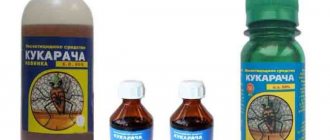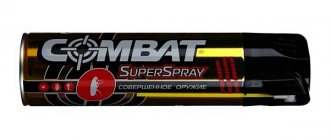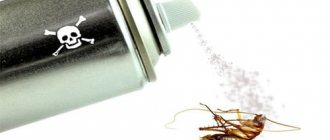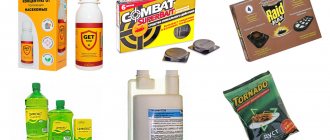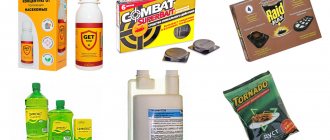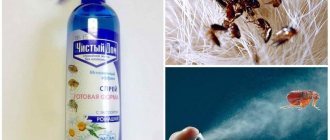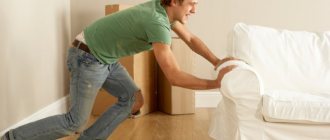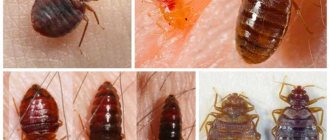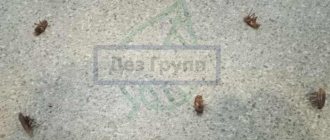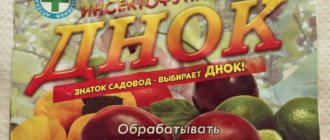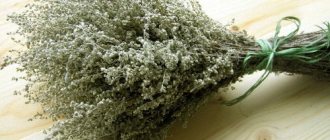Sichlor is an emulsion concentrate in the form of a clear, light yellow liquid containing as active ingredients the pyrethroid cypermethrin in an amount of 10% and the organophosphorus compound chlorpyrifos in an amount of 20%, as well as emulsifiers, solvents, and fragrance - up to 100%.
The product belongs to the 3rd class of moderately hazardous substances, and the working solution belongs to the 4th class of slightly hazardous substances.
Sychlor is used to kill bedbugs, cockroaches, ants, fleas, mosquitoes, flies and rat mites. It is allowed to be used at the following facilities: in municipal facilities, in basements, in residential and industrial premises, in children's and medical institutions.
Get a free consultation
Sichlor - a powerful insectoacaricide
Sichlor is a modern product designed to combat insects in residential premises, basements, and medical institutions. Specialized services also use it for wastewater treatment and waste disposal.
The manufacturing company is Dutch. The development belongs to Russian scientists, namely M. Kostina, M. Maltseva, E. Novikova. The drug was obtained from the Research Institute of Disinfectology of the Ministry of Health of the Russian Federation.
| Activity | Against bedbugs, cockroaches, fleas, ants, mosquitoes, ticks, as well as insect larvae and adults |
| Release form | yellow transparent liquid in a plastic bottle, 1 l |
| Active substance | Cypermethrin, Chlorpyrifos |
| Prolonged action | 3-5 weeks |
| Hazard Class | 3rd class (moderate) |
Product description
The modern product is a high concentration emulsion. The color has a light yellow consistency, and one bottle contains 1 liter. The powerful insecticide is characterized by versatility and helps against almost all types of parasites. This poison is considered an indispensable tool for summer residents. It’s worth buying Sychlor and independently evaluating the following positive qualities:
- An all-out attack on the unwanted inhabitants of your home;
- Versatility;
- High efficiency;
- Always in stock;
- Low price.
Effective composition
Sichlor is a combination drug. It contains two active components that complement each other:
- Cypermethrin (10%). Included in most modern medications for bedbugs, fleas, cockroaches and ticks. Disturbs the nervous system of adults, adults and larvae. Most active on the first day. Then its effectiveness gradually decreases. Can be valid for up to 30 days.
- Chlorpyrifos (20%). An organophosphorus compound that, when ingested by an insect, causes paralysis and death after a few minutes.
The product also contains fragrances, solvents and emulsifiers. It has a pungent odor, which prevents accidental use for other purposes.
Toxicity level
Before the sale of the drug began, Sichlor was subjected to numerous studies. As a result, it was established: • If it enters the stomach, it belongs to hazard class 3. Considered moderately dangerous. May cause nausea, dizziness, headache, vomiting, and rarely loss of consciousness. • According to the degree of volatility, classified as class 2. • According to the degree of impact on the skin – class 4 or low-hazard substances. Causes slight redness upon contact with skin. If the product gets on the mucous membranes of the eyes or nose, the irritation will be much stronger.
Features of application: instructions
The concentrated emulsion is diluted with cool water before use. For every 1 liter of water add 2.5-5 ml of the drug. Dosage recommended by the manufacturer:
| Sichlor dosage | Amount of drug per 1 liter of water | Amount of drug per 10 liters of water |
| Bedbugs, cockroaches, fleas, ants | 5 ml | 50 ml |
| Mosquitoes and flies imago | 5 ml | 50 ml |
| Fly larvae | 3.5 ml | 35 ml |
| Rat ticks and mosquito larvae | 2.5 ml | 25 ml |
VredStop.ru magazine recommends first clearing the room of debris and only then carrying out the treatment. This will make your work easier and increase the effectiveness of baiting cockroaches and bedbugs.
Instructions for use:
- Wear personal protective equipment: gloves, respirator, suit, face mask, headscarf.
- Dilute the drug in water according to the dosage. Mix evenly.
- Fill the spray device: hand or backpack sprayer, cold or hot fog generator.
- Treat sleeping places (without bedding), carpets from the inside out, holes and cracks in walls, thresholds, near baseboards from a distance of 20-30 cm.
- All places where arthropods are found are subject to treatment, as well as possible routes of movement and secluded corners for nests.
- If the number of cockroaches is high, it is recommended to treat adjacent rooms. Walls are treated against fleas to a height of 1 m.
- After treatment, the room must be left closed for at least 2 hours. After 2-24 hours, it is ventilated for 2 hours.
- After 24 hours, wash the drug off the surfaces using a solution of soda ash (50 g per 1 liter of water) and a rag.
- 1-3 hours after wet cleaning, animals and people can be allowed into the premises.
Absorbent surfaces are treated with a solution at the rate of 100 ml per square meter. On non-absorbent surfaces, the consumption is halved - to 50 ml per 1 m2.
Application of "Sichlor"
Sichlor must be diluted immediately before disinfestation, since the working solution is not suitable for storage. Detailed dosage information is indicated on the packaging. The solution is stirred for about 5 minutes, after which it can be used.
To consolidate the effect, be sure to add “Fas-super” powders to the finished solution before starting treatment (from 4 to 6 sachets for each liter of ready solution). When two drugs are combined, a synergistic effect occurs, which doubles the effect and strength of the resulting solution.
The solution is applied to places where bedbugs accumulate and along the likely routes of their movement. After the procedure, you need to vacate the room for several hours, and then thoroughly rinse all treated surfaces. When using the product, remember to take protective measures such as gloves and gauze bandages. Sichlor can only be used in rooms with open windows.
Attention, precautions!
Detailed instructions are included with the drug. Before use, you need to study it carefully. The product can cause severe poisoning, headache, irritation of the respiratory system, mucous membranes and skin.
Precautions when processing with Sychlor:
- It is necessary to use a universal respirator with a cartridge of grade “A”.
- Unprotected people and animals must leave the premises.
- Food, aquariums, dishes, and personal hygiene items must be taken outside the treated area.
- The insecticide is sprayed exclusively on the surface (not into the air). You cannot stay in one place for more than 2 seconds.
- During treatment, it is prohibited to drink, smoke, or eat.
- Every 45 minutes you need to go outside and breathe fresh air (10-15 minutes).
- After treatment, you should immediately leave the room, take a shower and rinse your mouth.
- The remainder of the drug should be stored in the original bottle in a well-ventilated area at a temperature of 0+25 degrees (away from food, children and animals).
Sychlor
Description:
INSTRUCTIONS for the use of the insectoacaricidal agent "Sichlor" (Netherlands) Developed at the Research Institute of Disinfectology of the Ministry of Health of the Russian Federation. Authors: Kostina M.N., Maltseva M.M., Novikova E.A. Intended for workers of disinfection stations, State Sanitary and Epidemiological Supervision centers, medical personnel of treatment and preventive institutions and other organizations that have the right to engage in pest control activities. 1. GENERAL INFORMATION 1.1. The insectoacaricidal agent "Sichlor" is an emulsion concentrate in the form of a transparent liquid of light yellow color, containing as active ingredients (AI) the pyrethroid cypermethrin in an amount of 10% and the organophosphorus compound chlorpyrifos in an amount of 20%, as well as emulsifiers, solvents, fragrance - up to 100%. The active ingredients of this product - cypermethrin and chlorpyrifos - meet all hygienic standards in the human environment. The following concentrations are recommended as maximum permissible concentrations in the air of the working area: for cypermethrin - 0.5 mg/m3 (aerosol + vapors, hazard class II); for chlorpyrifos - 0.3 mg/m3, hazard class III). 1.2. The product "Sichlor" has an acute insectoacicidal effect against cockroaches, ants, bedbugs, fleas, flies, mosquitoes and rat mites and residual activity for 3-5 weeks. 1.3. According to the degree of impact on the body of warm-blooded animals, according to GOST 12.1.007-76, when introduced into the stomach, it belongs to the III class of moderately hazardous, according to the degree of volatility - to the II hazard class according to the selection criteria for insecticidal preparations. When exposed to skin, it belongs to class IV of low-hazard substances. The product has a weakly expressed sensitizing effect, but in vapors of 0.15% aqueous emulsion at a 10-fold higher consumption rate, no sensitizing effect was detected. A mild local irritant effect on the skin upon single contact and a pronounced irritant effect on the mucous membranes of the eyes have been established. No skin-resorptive effect was detected upon repeated contact of 0.15% working aqueous emulsion with intact skin. When inhaled in the zone of acute biocidal effect, aerosols of 0.15% aqueous emulsion, in accordance with the Classification of the degree of hazard of disinfestation agents, belong to class II of highly hazardous substances. Vapors of 0.15% aqueous emulsion in the zone of subacute biocidal action belong to class III of moderately hazardous substances according to the Classification of the degree of hazard of disinfestation agents. 1.4. Means "Sichlor" Purpose: for the destruction of cockroaches, ants, bedbugs, fleas, flies, mosquitoes and rat mites at objects of various categories, as well as in places where flies breed (garbage chambers, garbage disposals) and mosquitoes (flooded basements of houses, sewers water) in the practice of medical disinfestation. 2. PREPARATION OF WORKING EMULSIONS AND CONSUMPTION RATES 2.1. To destroy the adults and larvae of arthropods, freshly prepared emulsions are used in concentrations of 0.075-0.15% according to the DV, which corresponds to a dilution of 400 and 200 times, respectively. 2.2. To prepare working emulsions, Sichlor is diluted with water at room temperature, stirring evenly. Calculation of the amount of the drug required to prepare the working emulsion is given in table. The amount of the drug "Sichlor" required for the preparation of working emulsions Pitchfork Concentration (%> according to DV Concentration (%) of the working emulsion according to the drug Amount of drug (g) per (l) of water 1 10 100 Cockroaches 0, 150 0, 50 5.0 50 500 Bedbugs 0. 150 0. 50 5.0 50 500 Ants 0. 150 0.50 5.0 50 500 Fleas 0. 150 0. 50 5.0 • 50 500 Adult flies 0. 150 0. 50 5.0 50 500 Flies larvae 0.1С0 0.35 3.5 35 350 Mosquitoes imago 0.150 0.50 5.0 50 500 Mosquito larvae 0.075 0.25 2.5 25 250 Rat ticks 0.075 0. 25 2.5 25 250 2.3. When working with working emulsions of the “C-chlor” product, sawing equipment of various brands is used 2.4. The consumption rate of the drug is 50 ml/m2 (non-moisture-absorbing surface) and 100 ml/m (absorbing removing moisture). Remove the product from the treated surfaces using a wet method - with a rag and a soap-soda solution 24 hours after application, but no later than 3 hours before the start of the working day. The product is removed from other places after 3-5 weeks - after losing its effectiveness. 3. USE OF "SICLOR" 3.1. DESTRUCTION OF COCKROACHS 3.1.1. To destroy cockroaches, use 0.151 (according to DV) working water emulsions, selectively treating surfaces in places of detection, localization and along the paths of movement of insects. Particular attention is paid to holes and cracks in walls, in door frames, thresholds, along baseboards, in facing coverings, as well as ventilation vents, and the joints of pipes of water supply, heating and sewerage systems. 3.1.2. Treatment is carried out simultaneously in all rooms inhabited by cockroaches. In case of high and very high numbers, adjacent premises are treated for preventive purposes: to prevent migration and subsequent colonization of cockroaches. 3.1.3. Repeated treatments are carried out when insects appear. 3.2. DESTRUCTION OF ANTS To destroy red house ants and other species of ants that often penetrate indoors, travel routes (“paths”) or places of accumulation are treated. A working emulsion of 0.15% (DV) concentration is used. Treatments are repeated when ants appear 3.3. DESTROYING BUGS 3.3.1. To kill bedbugs, use 0.15% (DV) aqueous emulsions of the drug. If the premises are sparsely populated, only their habitats are treated with bed bugs: their habitats; in case of a large population and in the case of walls facing with dry plaster, the places of their possible settlement must also be treated; cracks along baseboards, borders, places where wallpaper is loose, around door and window frames and ventilation grilles, cracks in walls, furniture, as well as carpets on the back side. 3.3.2. Do not treat bedding! Z.Z.Z. Simultaneous treatment of all premises is carried out only in dormitories, where frequent introduction of insects is possible. 3.3.4. Repeated treatments are carried out when bedbugs are detected. 3.4. DESTROYING FEAKS 3.4 .1. To kill fleas, use 0.15% (in the Far East working water emulsion, treating walls to a height of up to 1 m), the floor surface in places where linoleum flooring and baseboards are lagging, cracks behind baseboards, carpets, paths. on the back side. 3.4.2. When processing cluttered basements, these rooms are first cleared of debris if possible; and then thoroughly irrigate. 2.4.2. Repeated treatments are carried out according to entomological indications. 3.5. DESTRUCTION OF FLIES 3.5.1. To destroy imagoes of house flies or other types of flies, use 0.15% (according to the DV) working aqueous emulsion, which is used to irrigate the landing sites of flies in the premises, as well as the external walls of buildings, garbage containers, garbage disposals and sandblasting installations . 3.5.2. The emulsion consumption rate is 50-100 ml/m2, depending on the number of flies and the type of surface being treated. 15 to 50 cm. 3.5.3. To destroy fly larvae, they are treated with a 0.10% emulsion of their breeding places (cesspools, waste, food waste) at intervals of 1 time every 20-30 days. The consumption rate is 0.5-1 l/m2 with a waste thickness of 50 cm. When processing cesspools 3-5 m deep, the consumption is increased to 5-10 l per 1 m2 3.5.4. Repeated treatments are carried out when winged flies appear. 3.6. DESTRUCTION OF MOSQUITOES 3.6.1. To destroy adult mosquitoes, use 0.15% (DV) working aqueous emulsion, which is used to irrigate mosquito landing sites indoors, as well as the outside of buildings or inside fences for garbage containers, where mosquitoes hide in hot weather. 3.6.2. To destroy mosquito larvae, 0.075% (DV) water emulsions are used, which are evenly sprayed over the surface of closed urban reservoirs: basements of residential buildings, fire-fighting containers where mosquito larvae breed. 3.6.3. The consumption rate is 100 ml per 1 sq.m. water surface. 3.6.4. Repeated treatments are carried out according to entomological indications - the appearance of live mosquito larvae. Repeat treatments no more than once a month. 3.7. DESTROYING RAT TICKS 3.7.1. To destroy rat mites, use 0.075% (DV) water emulsion, which is used to irrigate manholes, pipes of various communications, baseboards, walls and floors along them, as well as places where mites may accumulate - heated areas of walls and floors near heating devices and thermal communications, the lower part of the furniture, work tables, which are processed entirely, including the drawers in them. If there are false coverings behind which rodents can move, ceilings and walls must also be treated. 3.7.2. The consumption rate is at least 100 ml of working water emulsion per 1 m2 of treated surface 3.7.3. Repeated treatment is carried out according to indications, but not earlier than 10-15 days after the first. 4. PRECAUTIONS 4.1. Treatment of premises should be carried out in the absence of people, domestic animals, birds, fish, or in open mud. Food and utensils should be removed or carefully covered before processing. When processing workshops of industrial enterprises, first remove and carefully cover products that can adsorb the drug. After treatment, the room should be well ventilated for at least 1 hour in the absence of people. Treatment in children's food establishments: ': should be carried out on sanitary days or weekends. After disinsection, the premises should be wet cleaned using a soap and soda solution. It is possible to stay indoors 1-2 hours after completion of treatment. 4.2. Premises treated with the product cannot be used until they are cleaned, which is carried out later than 3 hours before the object is used for its intended purpose. Cleaning is carried out wearing gloves, using a soda solution (30-50 g of soda ash per 1 liter of water). 4.3. Those working with the product must observe the following precautions: before starting to work with the product, the exterminator provides instructions on safety precautions and first aid measures. Persons carrying out disinfestation, packaging of the drug, and preparing emulsions must use personal protective equipment. 4.4. Personal protective equipment includes: a kha-pat or cotton overalls, a scarf, an oilcloth or rubberized apron and oversleeves, rubber technical gloves or cotton mittens with a film coating, sealed safety glasses (PO-2, PO-3, monoblock), universal respirators “RU-60M”, “RPG-67” with a cartridge of grade “A”. Approximate protection time is at least 100 hours. 4.5. After finishing work, work clothes should be shaken outside and washed. Wash it as it gets dirty, but at least once a week, after soaking it (to neutralize dirt) in a hot soap-soda solution for 2-3 hours (50 g of soda ash and 27 g of soap per 1 bucket of water), then Wash in fresh soap and soda solution. 4.6. When working with the product, be sure to follow the rules of personal hygiene. Smoking, eating and drinking in the treated area is prohibited. After finishing working with Sichlor, rinse your mouth, wash your hands and face with soap and water. 4.7. Every 4 5-50 minutes of working with the product, it is necessary to take a break for 10-15 minutes, during which you must go out into the fresh air, taking off your overalls, respirator or gas mask. 4.8. It is prohibited to use products for treating premises that do not have a passport indicating the name of the product, date of manufacture, percentage of active substance, as well as approved Methodological Recommendations and a Certificate of Conformity. 5. FIRST AID FOR POISONING 5.1. If safety rules are violated or accidents occur, acute poisoning may develop. Signs of poisoning: unpleasant taste in the mouth, weakness, vomiting, headache, nausea (increased by smoking, eating), abdominal pain, constriction of the pupil, irritation of the respiratory system, excessive salivation. 5.2. In case of poisoning through the respiratory tract, remove the victim from the room into fresh air, remove contaminated clothing, and rinse the mouth with water or a 2% baking soda solution. Then give 1-2 glasses of water with activated carbon (10-15 tablets) to drink. 5.3. If the drug accidentally gets into your eyes, rinse them thoroughly with a stream of water or a 2% solution of baking soda, copiously for several minutes. If irritation of the mucous membrane occurs, drop 30% sodium sulfacyl into the eyes; if pain occurs, 2% novocaine solution. 5.4. If the skin is contaminated, remove drops of the emulsion with a cotton swab or rag, etc., without rubbing, then wash the contaminated area with soap and water. 5.5. In case of accidental ingestion of the drug, it is necessary to drink several glasses of water and induce vomiting, then rinse the stomach with a 2% solution of baking soda or drink 1-2 glasses of water with activated carbon (10-15 tablets). Do not induce vomiting or inject anything into the mouth of a person who has lost consciousness. 5.6. After providing first aid, the victim should consult a doctor. The antidote is atropine sulfate. 6. TRANSPORTATION, STORAGE, PACKAGING 6.1. Transportation of Sichlor is permitted by all modes of transport in accordance with the rules for the carriage of goods in force for this type of transport, with Classification Code 6112, UN No. 2588. 6.2. Store the product in a dry, covered warehouse in a closed container at a temperature from minus 10 to plus 40°C. 6.3. The product is packaged in 0.5; 1 and 20 l B hermetically sealed canisters. 6.4. Shelf life: 3 years in unopened packaging.
Analogs
The drug Sichlor has many analogues. For example, "Agran". It contains the same components. “Tetracin”, “Averfors”, “Aggressor”, “Sipaz Super” are slightly different in composition. The choice of professional remedies for bedbugs and cockroaches is very extensive. But perhaps the most popular drugs are “Executioner” and “Zonder”.
Reviews about the drug
There are not many reviews about Sichlor. Few people decide to use it themselves. Here's what they write about him:
Vladimir:
“Helped me get rid of bedbugs and cockroaches. I have been renting out an apartment for a long time. I was in another city. When the tenants moved out, I was horrified by the number of insects. Apparently, they poisoned this horde with something, since the usual “Raptor” did not work. I chose Sychlor because of its two-component composition. I treated it with a garden sprayer while wearing a robe and a respirator. Left for a day. All the insects died. I collected a quarter of a bucket!”
Olga Alekseevna:
“Since 2022 I have been using Sichlor for prevention. The neighbors are swarming with them. And our exterminators removed all the insects. A friend advised me to use Sichlor along the baseboards and borders with neighbors during general cleaning. Helps. Cockroaches don’t come near us.”
Advantages and disadvantages
Advantages:
- The composition of the drug is effective even in rooms densely populated with bedbugs;
- This product has a fairly long residual effect, which helps fight bedbug eggs, it lasts up to 5 weeks;
- After spraying, no traces remain on the treated surfaces.
Flaws:
- Quite a noticeable smell;
- May damage varnished and painted surfaces;
